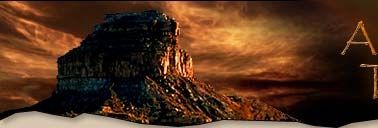Timeless Knowledge Lesson Plans
Sun-Earth Day 2005: A Special Day In Your Classroom
This activity is an opportunity to explore observations of the Sun in the past and present. You will be introduced to a variety of images, ideas and the new NASA Connect program, "Ancient Observatories, Timeless Knowledge". This particular NASA Connect program is not just about math! It also includes Science, Geography, History, Cross-Cultural Connections and Technology.
Technology Through Time Bulletin Board Activity
This bulletin board activity is designed to focus student attention on the role that sun watching has played in humankind's survival through time. As part of this display you may wish to use your own world map ordownload one we have created for you.
The Sun: An Introduction
This lesson introduces the topic of the Sun. Students also begin making entries in their Science Journals.
Daytime Astronomy for Elementary and Middle School Students
The over-arching question addressed by these units is "Why do daylight hours vary in length where we live?" All activities have been arranged for convenience into three interchangeable units.
How Big is the Sun? Exploring the Size and Scale of the Sun, Earth and Moon
Students will explore the relative sizes of the Sun, Earth and Moon as they make an impressive large-scale model for classroom use throughout the unit.
What Makes Shadows? Observing and Drawing Shadows
Students learn about shadows as they observe and draw the shadow of a classmate.
What Makes Day and Night? The Earth's Rotation
In this demonstration of day and night, students learn kinesthetically as they take on the role of the Earth orbiting the rotating Sun.
Making Sundials: Observing and Using Shadows
Students build sundials and observe changes in shadows over the course of one or more days.
General Sun-Earth Connection Lesson Plans
Create an Edible Model of the Sun (pdf - 1 Meg)
Studying Our Scintillating Sun: Students will construct an edible model of the Sun denoting surface and interior feature.
All About the Sun
From NASA's Quest's Learning Technologies Channel (at NASA Ames) and the Stanford Solar Center, learn more about the sun from this impressive archive of video clips and materials from past webcasts.

